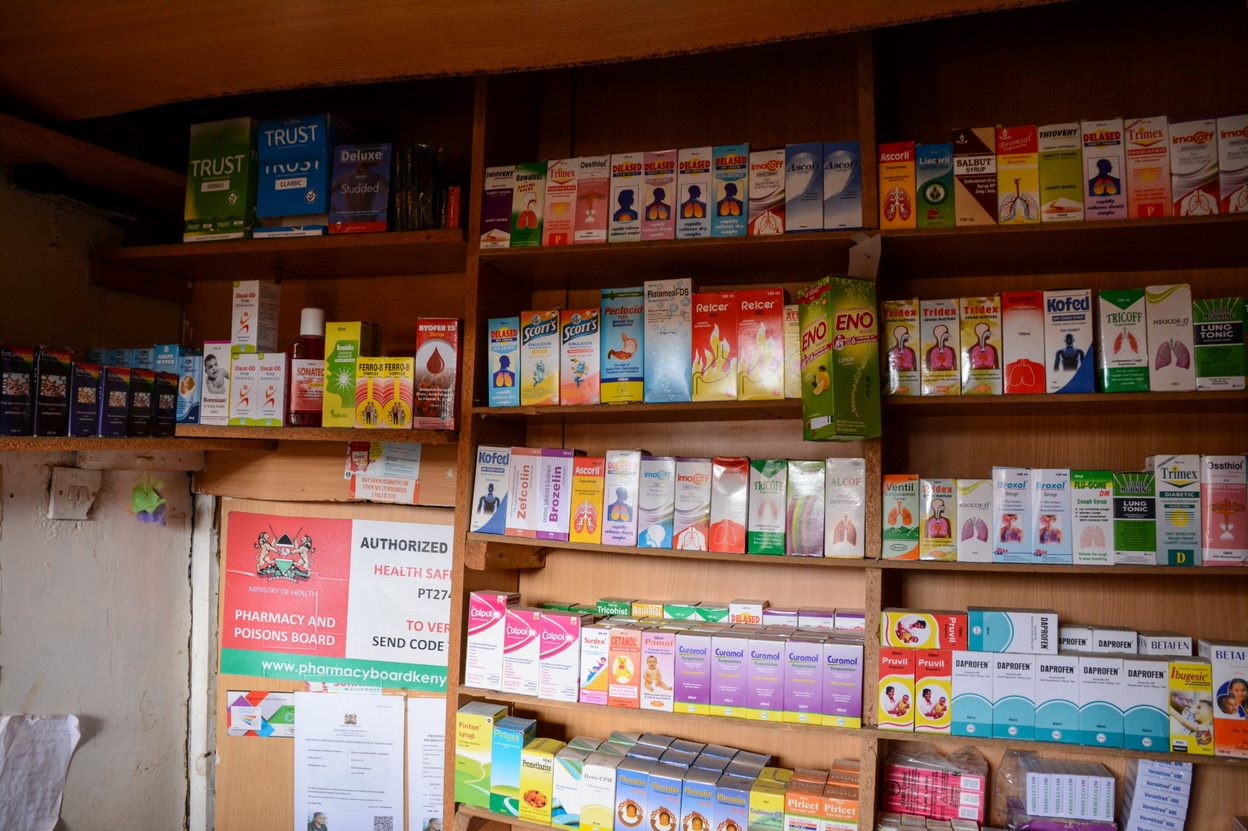Drug supply is an essential part of healthcare provision, as drugs contribute a significant percentage of healthcare costs (20 – 60%) and can determine the health outcomes of patients. Most people living in low- and middle-income countries (LMICs) have limited access to medicines due to issues with proximity to health facilities, affordability, availability acceptability and a generally weak regulatory system that is not able to safeguard medicines quality and costs.
In addition, most low-income urban residents pay out-of-pocket for health services in private health facilities. High retail prices for drugs coupled with high costs of healthcare services, as in many of these countries there are none to limited prices control mechanisms in place, can push residents further into poverty and ill health.
In Nairobi, low-income settlements house about 60% of the population. Here, retail pharmacies are acknowledged as the first and sometimes only contact for the urban poor who need conventional medicines. Public health facilities in these areas cope with several issues, including shortages of medicines and laboratory supplies, discourteous staff and poor working conditions. Several previous studies have indicated that patient-oriented services in low-income settlements are often inadequate. Furthermore, in health facilities there are often large irregularities in medicine stocks, for instance understocking of essential medicine and overstocking of other medicines.
In 2016, an extensive descriptive study was conducted in private health facilities in low-income settlements in Nairobi. The retail pricing, availability, and affordability of medicines in these health facilities as well as the quality of their pharmaceutical services were assessed. According to Dr Kennedy Abuga, Nairobi was the best place to conduct this study, as the socioeconomic disparity in Nairobi reflects the tensions in Kenya overall. In 2018, another study was conducted that explored the reasons behind the over- and understocking of medicines in health facilities.
It was found that facilities serving the low-income residents are typically small and do not have access to large drug quantities. Accordingly, they do not benefit from economies of scale, which affects their profits and ultimately the prices they charge for drugs. These prices also varied. As a result of different procurement processes, the same drug may cost twice as much in different regions of Nairobi.
Prices differ between generic and innovator brand drugs as well. The analyses showed innovator brands to be about 14 times more expensive than the lowest priced generics. Compared to other countries, the drug prices in Nairobi (Kenya) were also significantly higher. Even though generics were cheaper than innovator brands, their prices were three times higher than the international reference prices (IRP).
Furthermore, in terms of pharmaceutical services provided, nearly 50% of personnel offering these services were not always supervised by a pharmacist or pharmaceutical technologist. This is problematic as not engaging a professional to offer pharmaceutical services could affect the quality of services and health outcomes.
This study resulted from a partnership between PharmAccess, UoN and later, INSEAD Humanitarian Research Group. From the findings, two papers have been published. A follow-up study was also conducted, exploring the practices and root causes of under and overstocking of drugs in the health facilities.
Read the study.
Images Copyright © 2019 Sarah Dewilde


